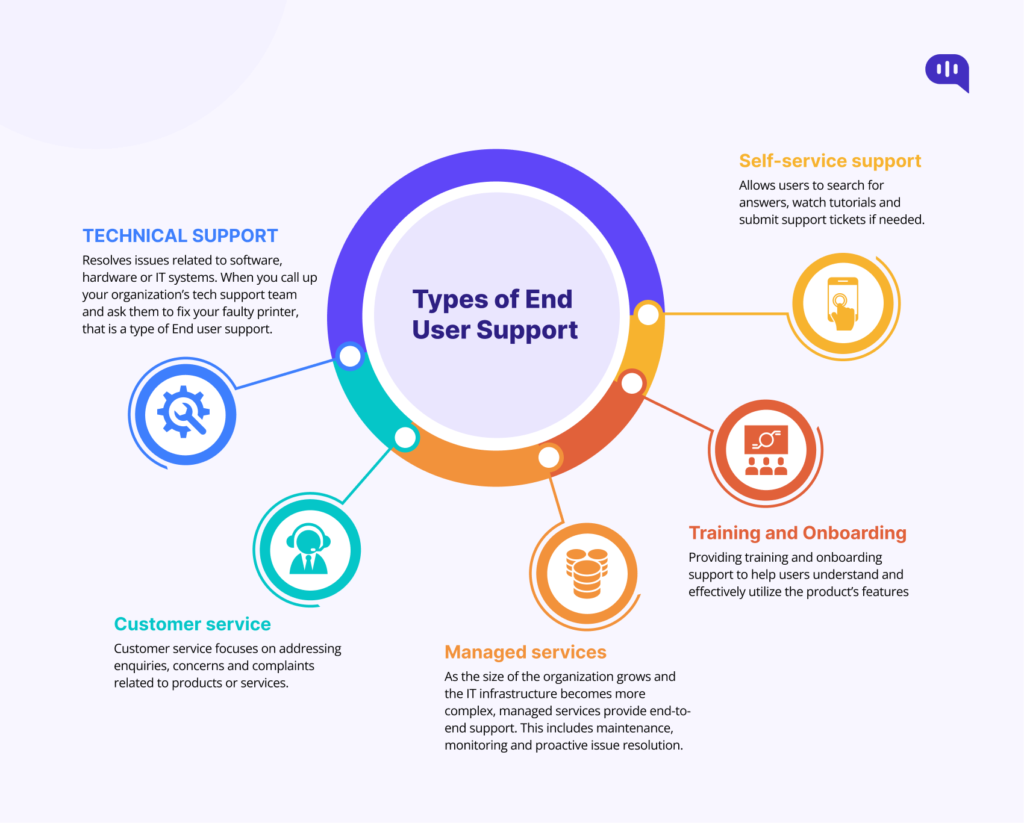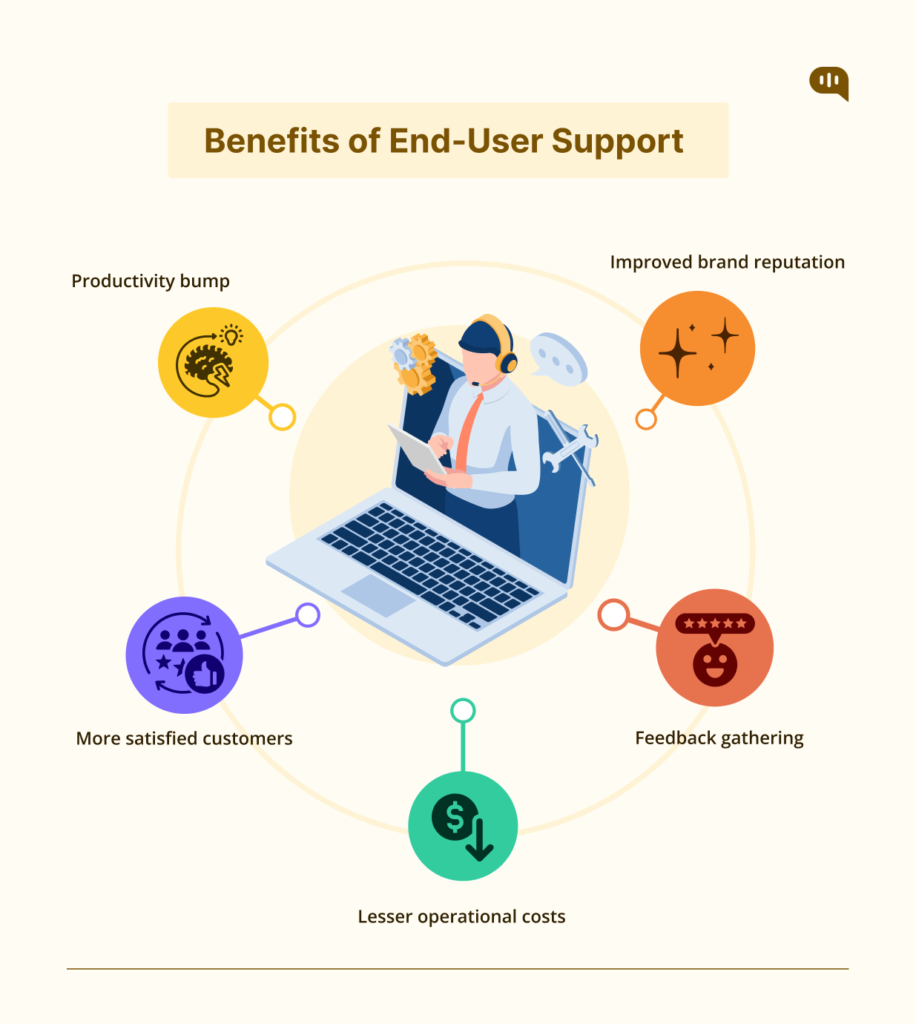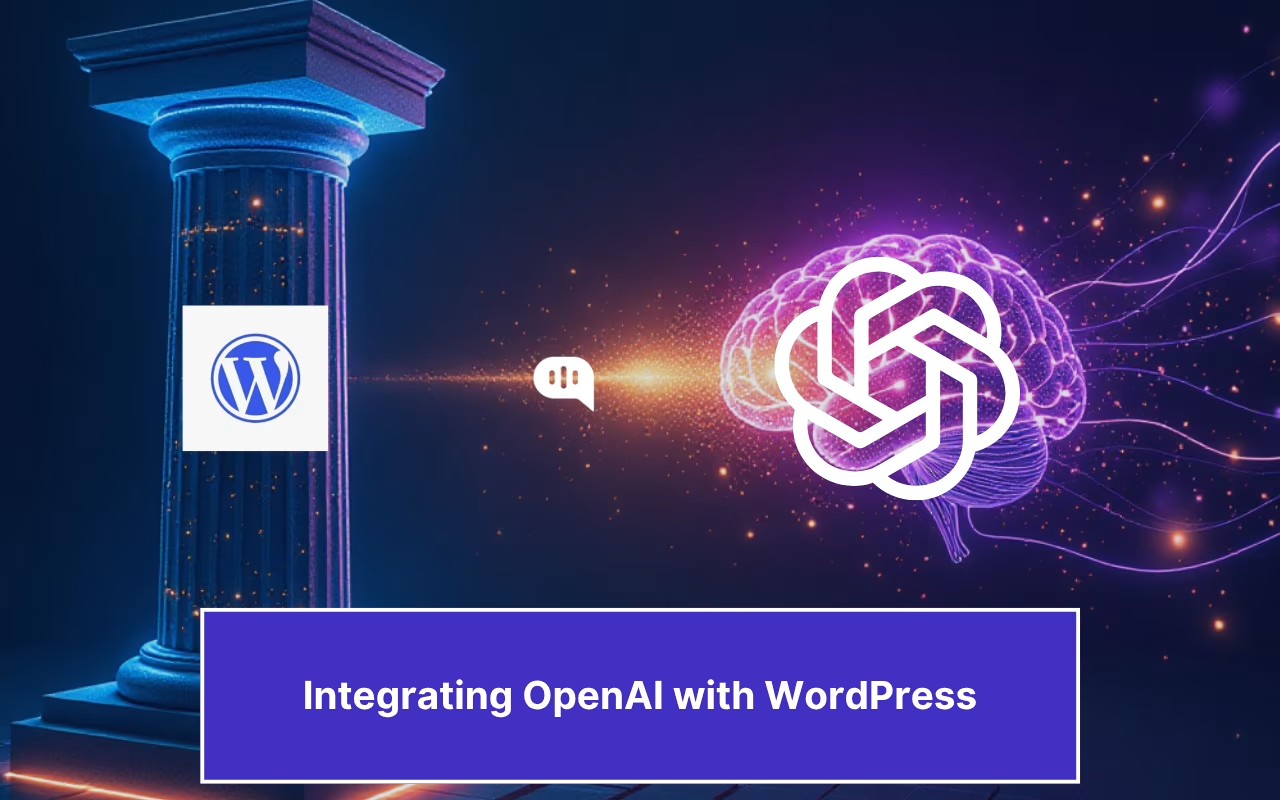Updated on January 22, 2025
According to this report by Exploding Topic, 3 out of 4 Americans say that customer experience is the chief reason they will choose among competing brands. Providing excellent end-user support then, is no longer a fancy add-on, but a must-have.
The challenges faced by US Enterprises in scaling these end-user support operations to meet the demands of an increasingly demanding workforce and a geographically distributed customer base are significant, to say the least.
One of the main challenges that enterprises face is finding skilled talent for the IT support domain. According to the US Bureau of Labour Statistics, employment of computer support specialists will grow by 9% from 2020 to 2030, which is really fast compared to other occupations.
In addition, enterprises need to cater to the diverse needs and expectations of their customer base, which will range from tech-savvy individuals to those who have limited digital knowledge. Failure to provide a consistent customer experience will lead to customer dissatisfaction, churn, and eventually, financial loss.
Overcoming these challenges requires enterprises to readily adopt innovative strategies, such as leveraging artificial intelligence and automation, investing in remote support tools, and implementing self-service portals. A scalable end-user support strategy can offer significant benefits to the customers, including improved customer satisfaction, better customer experience, and eventually, loyal customers.
In this blog post, we are going to look at:
- What Is End User Support?
- Types of End User Support
- Benefits of End User Support
- End-User Support Challenges
- Strategy For Providing Great End-User Support
- Compliance and Regulations That impact end-user support strategy.
Without beating around the bush, let’s get right into it.
1. What is End-User Support?
End-user support refers to the support that is given to the regular users of a product or a service to solve the issues they encounter. Various aspects of end-user support involve troubleshooting problems and offering guidance so that users can effectively use the product or service.
This support can be delivered through various channels like phone, email, chat, or in-person interactions.
The ultimate objective of end-user support is to reduce friction for the customer. This can only be achieved when the users effectively use their technology, to get the most out of their digital experiences.
That’s just scratching the surface of what end-user support is, but now, let’s go a bit deeper to see the different types of end-user support.

2. Types of End-User Support
End-user support is a crucial function that makes sure that the products and services of a company are put to the best use possible. Many different types of end-user support exist, each tailored to meet the needs of different users.

Here are 5 different types of end-user support:
- Self-service support: Think knowledge bases, FAQs, and online communities. These are prime examples of customers finding the information they need by themselves. The big players in the market, such as Salesforce and Zendesk, have great self-service portals that allow users to search for answers, watch tutorials, and submit support tickets if needed.
- Technical support: Tech support, as it is popularly known, resolves issues related to software, hardware, or IT systems. When you call up your organization’s tech support team and ask them to fix your faulty printer, that is a type of End-user support. The big names, such as Microsoft, Dell, and Apple, all have excellent technical support, which they offer through various channels such as phone, chat, or online knowledge bases.
- Customer service: Customer service focuses on addressing inquiries, concerns, and complaints related to products or services. Customer service means assisting customers with orders, returns, bills, and general product information. Examples of companies providing excellent customer service include Amazon and Zappos.
- Managed services: As the size of the organization grows and the IT infrastructure becomes more and more complex, managed services provide end-to-end support. This includes maintenance, real user monitoring, and proactive issue resolution. Some notable names that provide managed services include IBM and Accenture.
- Training and Onboarding: As products become increasingly more complex, end-user support often means providing training and onboarding support to help users understand and effectively utilize the product’s features. Top names like Adobe and Atlassian offer comprehensive training programs and certification courses to make sure that users can maximize the value of their products.
We now know the different types of end-user support, but the question remains – Why should you provide top-notch support? What are the benefits?
The answer to that question lies in this next section.
3. Benefits of End-User Support
Investing in a comprehensive end-user support strategy will help companies drive customer satisfaction, operational efficiency, brand loyalty, and product innovation. These will contribute to the long-term business success. Let us take a look at some of the benefits of an effective end-user support strategy:

- Productivity bump: When you resolve technical issues and provide training to the end users, there is most likely to be a boost in the productivity and efficiency of a product or a service.
- Improved brand reputation: Delivering high-quality support on a consistent basis can positively impact a company’s brand image and reputation. Apple’s Genius bar is an example of this, as it has become synonymous with its reputation of providing excellent customer service.
- More satisfied customers: When a company goes the extra mile to provide personalized assistance and faster resolution to queries, customer satisfaction scores are bound to shoot up. Take Zappos, the American eCommerce giant, for example, whose customer service has earned it a strong brand reputation.
- Lesser operational costs: When an enterprise puts in the effort to proactively resolve issues and give self-service options, it will reduce the need for costly, in-person support. Amazon is a great example of a company that has embraced this technique and seen a huge dip in its support costs.
- Feedback gathering: When companies get an opportunity to analyze customer support interactions, product teams can use the feedback to improve the customer experience.
We have thus seen the various benefits of providing great end-user support. But doing this is not as straightforward as one thinks it is. Here are some of the challenges that you may face while providing great end-user support.
4. End-User Support Challenges
Providing effective end-user support can involve the following challenges:
- Diverse customer base: As a large enterprise that has a customer base across continents, providing a consistent customer experience can be quite challenging. This involves providing support in multiple languages and also adapting to changing user needs and preferences.
- Complex technology: There are a host of different devices, software, and integrations within the modern product ecosystem. Troubleshooting technical issues efficiently becomes increasingly challenging in this scenario, and is a significant impediment to providing satisfactory customer support.
- Rising customer expectations: Customers today are more demanding than ever, and they expect seamless, personalized, and immediate support. Meeting this customer expectation while maintaining operating efficiency is a major challenge.
- Analyzing support data: Implementing a good end-user support strategy means sifting through, analyzing, and deriving insights from a lot of customer data. Making sense of this much data to improve operations can be challenging.
- Finding the right people and retaining them: Skilled support personnel are an asset to any enterprise, and they may spend months or even years in talent acquisition and upskilling of these support staff. In this tight labor market, retaining these employees and scouting for new talent can be quite challenging.
While these challenges may look daunting, they should not stop an enterprise from striving to provide the best end-user support possible. Here are a few strategies that can help you provide great end-user support.

5. Strategies for providing great end-user support
Strategy 1: Omni-channel support:
Customers should get a seamless, integrated support experience across a wide array of channels, such as phone, email, chat, social media, and self-service portals. Customers can get help from a channel that they prefer, improving the chances that they will remain loyal to your brand. Zendesk and Salesforce are excellent examples of companies that provide omnichannel support.
Strategy 2: All-encompassing Self-service options
Enterprises should invest in robust self-service options, including an intuitive knowledge base, step-by-step tutorials, and community forums. Customers can thus find any information that they seek on their own, reducing the burden on the support team. Zendesk’s Help Center is famous for its self-service offering.
Strategy 3: Knowledgeable Support Staff
Enterprises should train their staff to deliver effective and efficient customer service, by providing them with continuous learning opportunities and also the necessary tools and resources. By empowering the support staff and cultivating a customer-centric mindset, enterprises are thus paving the way for a great customer experience.
Strategy 4: Proactive assistance
Enterprises can leverage customer data and use AI-powered tools such as chatbots that can anticipate customer needs and provide personalized, proactive support. This can include predictive troubleshooting, contextual recommendations, and preemptive outreach. Examples of virtual assistants include Amazon’s Alexa and Apple’s Siri.
Strategy 5: Incorporate customer feedback
To improve the quality of your end-user support, actively seek out feedback from your customers, and collect and analyze support data. Use the insights that you gain from them to enhance the product design, documentation, and support processes, which will help improve the overall customer experience.
With these strategies in place, you can ensure that your customers get the best end-user support possible. There can be a few hiccups in the form of compliance and regulations that impact the end-user support strategy.
We will briefly touch upon these compliance requirements in this next section.
6. Compliance and Regulations That Impact End-User Support Strategy
The end user support strategy that your enterprise adopts should not just deliver exceptional customer experience, it must mitigate legal and financial risks and make sure it is compliant with all the local laws and regulations.
Data privacy regulations such as the California Consumer Privacy Act (CCPA) and Health Insurance Portability and Accountability Act (HIPAA) dictate that consumer data is handled with utmost care. This will include setting up strict data collection protocols, obtaining permission to collect data, and limiting the use of sensitive data in customer interactions.
In addition to this, industries like healthcare and finance have additional compliance requirements that must be factored into the end-user support strategy.
All said and done, end-user support must be a key pillar in your product management efforts. If you do this, you are positioning your enterprise for long-term success and growth in the hyper-competitive market.

CEO & Co-Founder of Kommunicate, with 15+ years of experience in building exceptional AI and chat-based products. Believes the future is human + bot working together and complementing each other.





